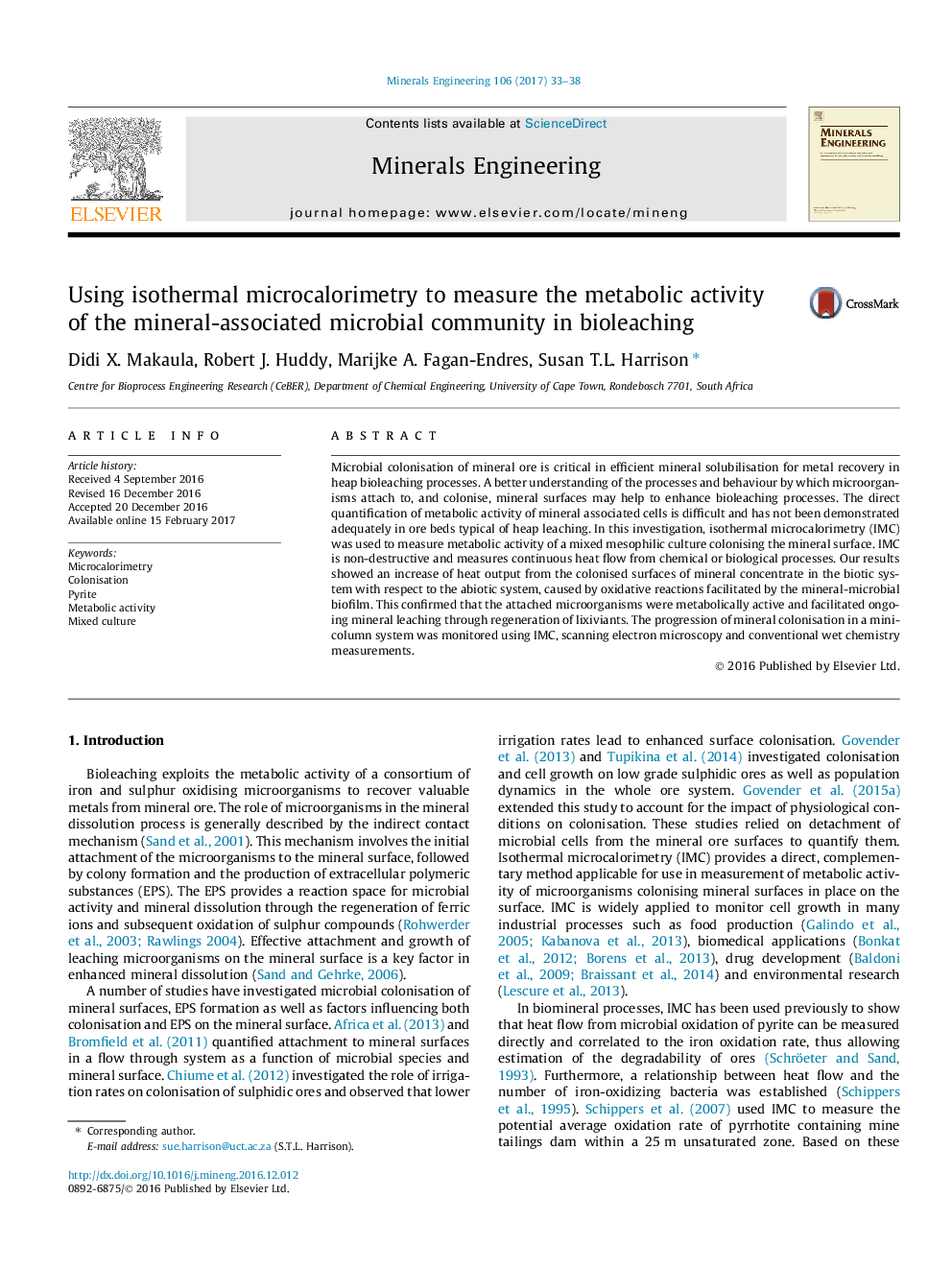| Article ID | Journal | Published Year | Pages | File Type |
|---|---|---|---|---|
| 6477817 | Minerals Engineering | 2017 | 6 Pages |
â¢Isothermal microcalorimetry is used to measure microbial activity on the mineral.â¢Microbial activity of a mixed mesophilic community colonising pyrite is quantified.â¢Metabolic activity increased with increasing attachment during early colonisation.â¢Metabolic activity can be measured directly from the humid mineral surface provided.â¢Using mineral coated beads, metabolic activity is determined on a surface area basis.
Microbial colonisation of mineral ore is critical in efficient mineral solubilisation for metal recovery in heap bioleaching processes. A better understanding of the processes and behaviour by which microorganisms attach to, and colonise, mineral surfaces may help to enhance bioleaching processes. The direct quantification of metabolic activity of mineral associated cells is difficult and has not been demonstrated adequately in ore beds typical of heap leaching. In this investigation, isothermal microcalorimetry (IMC) was used to measure metabolic activity of a mixed mesophilic culture colonising the mineral surface. IMC is non-destructive and measures continuous heat flow from chemical or biological processes. Our results showed an increase of heat output from the colonised surfaces of mineral concentrate in the biotic system with respect to the abiotic system, caused by oxidative reactions facilitated by the mineral-microbial biofilm. This confirmed that the attached microorganisms were metabolically active and facilitated ongoing mineral leaching through regeneration of lixiviants. The progression of mineral colonisation in a mini-column system was monitored using IMC, scanning electron microscopy and conventional wet chemistry measurements.
